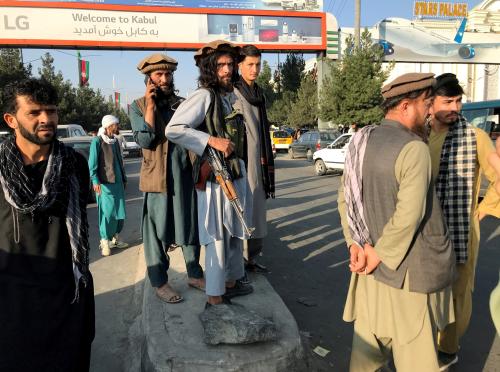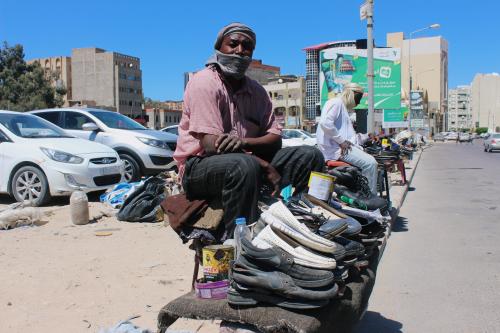Perhaps the most effective tool for guiding the collection of IDP
statistics are the Guiding Principles on Internal Displacement. At a recent regional
seminar on internal displacement co-sponsored by the Government of Mexico,
the Office of the Representative of the UN Secretary-General on Internally
Displaced Persons and the Brookings Institution-Johns Hopkins SAIS Project on
Internal Displacement, the Principles served as the backdrop for analyzing the
current situation of the internally displaced in the Americas. At this meeting,
the collection of information on the displaced in the Americas was discussed by
governmental authorities, and representatives of international,
non-governmental and IDP organizations. Participants emphasized that credible information on
the numbers and conditions of IDPs is essential to designing effective
programs.
In order for the data to be most effective in meeting the concerns of
the displaced, it should be disaggregated by age, gender and ethnicity (persons
of African ancestry and the indigenous) so that the concerns of adolescents,
women heads of household, the elderly and the disabled are taken into account.
Although not discussed at the seminar, it is my view that statistics on
Afro-Colombians would be significantly enhanced if authorities and NGOs collecting
data on the displaced consulted with rural community and IDP leaders. In
addition, data collectors should engage in dialogue about discrepancies that exist
among the various information sources.
At the regional seminar, participants pointed out that attention needs
to be given to the different categories of IDPs. These categories include
persons displaced due to armed conflict, generalized violence, human rights
violations, natural disasters and development projects. With regard to Colombia,
attention should be paid to these different categories, as well as those displaced
by fumigation, which are sometimes not recognized. Also, persons responsible
for collecting data on IDPs must do so in a manner that does not jeopardize
the safety of the displaced. They need to be sensitive to the situation of IDPs
who may fear exposing themselves due to security concerns or fear that
revealing their status will result in stigmatization and discrimination. Others may
be reluctant to admit they are IDPs because they lack the necessary documents
to prove their identity.
In addition to collecting data on the various categories of IDPs,
statistics should reflect the various forms and phases of internal displacement. In
Colombia, there exist various forms of displacement including individual,
small scale known as “gota a gota” and massive displacements. There also exists
rural to rural, rural to urban and intra-urban forms of displacement. Each of
these forms of displacement requires different responses. Statistics on these
different forms of displacement are essential to ensuring that individual IDPs
are not overlooked and that their specific needs are met.
Often, statistics on IDPs focus on the “emergency” phase of
displacement, when persons are in critical need of protection and assistance. Although
this phase requires immediate collection of data to ensure a rapid response by
authorities with the support of the international community and national actors,
it should not be viewed as the only phase in which IDPs require protection
and assistance. The data collectors must also take into account that in Colombia
persons in the initial phase of displacement reside in the same areas as long
term IDPs, IDPs who have experienced multiple displacements, and poor
non-IDPs. In order to avoid tensions and conflict among receiving communities, the
data must reflect the comprehensive reality of the IDP experience so that
assistance programs can take into account the needs of mixed IDP and non-IDP
populations.
Also necessary is accurate data on the conditions faced by IDPs who have
returned to their places of origin or have resettled elsewhere in the
country. Return and resettlement are often linked to the question of “when does
displacement end?” When answering this question, analysts must take into account
whether or not the person has fully recovered from displacement and is once
again a secure and self-sustaining productive citizen in Colombian society. The
Government should accordingly consider formally extending humanitarian
assistance to IDPs beyond the three-month period specified by Law 387 to a period that
reflects the needs and situation of most of Colombia’s internally displaced.
A decrease in the number of newly displaced persons does not necessarily
mean that the humanitarian and human rights conditions that have led to
displacement have been resolved. In the case of Colombia, we have seen a drop in
the overall number of displaced persons yet the phenomenon of blockaded or
“confined” communities continues to increase. These are civilians who cannot flee
because their freedom of movement and right to seek refuge in another part of
the country as a form of protection is being impeded. It is important that this
dimension of the humanitarian situation be considered when analyzing whether
or not progress has been made in addressing the displacement crisis.
Today’s seminar, organized by the Consultancy for Human Rights and
Displacement (CODHES), one of the world’s leading NGOs on independent IDP data
compilation, seeks to develop indicators that improve the current IDP data
collection systems in Colombia so they better address the human rights and
humanitarian concerns of IDPs. When formulating data systems for the displaced, I would
encourage all of you to utilize the Guiding Principles as a barometer for
developing effective information systems for the displaced. It is also important
to remember that behind each number there exists a human being who is seeking
to shed his or her IDP status and again become a productive citizen of
Colombian society.


Commentary
Reflecting the Reality on the Ground: Ensuring an Effective Protection and Assistance Response to IDPs through Improved Data Collection.
September 21, 2004